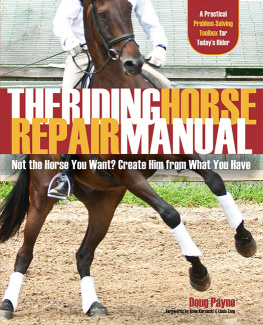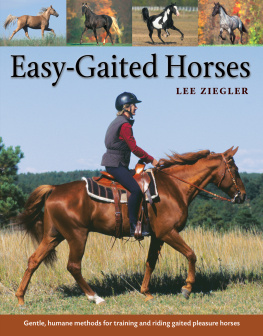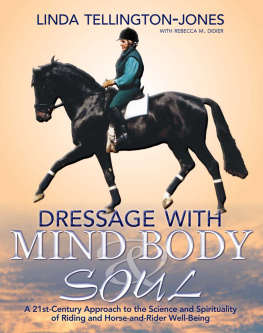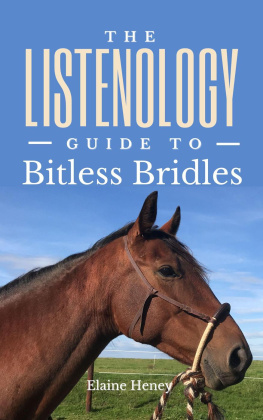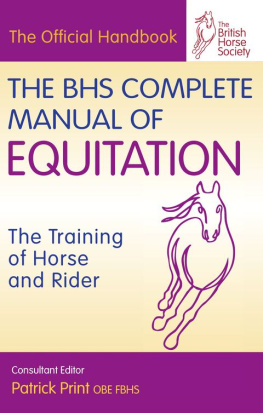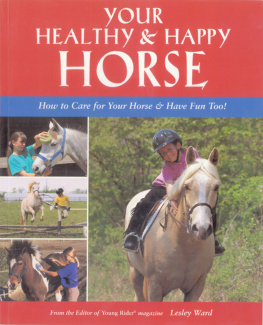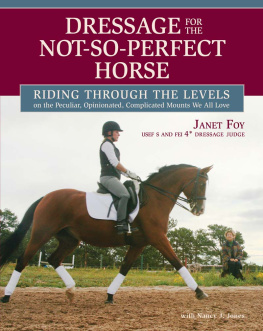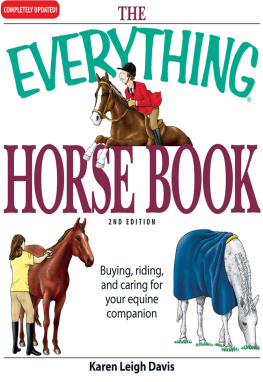THE
RIDING HORSE
REPAIR MANUAL
Not the Horse You Want?
Create Him from What You Have
Doug Payne
Forewords by Anne Kursinski & Linda Zang
This book is dedicated to the countless horses
whose genuine, tireless efforts allow us to join them
in the endless pursuit of excellence in sport.
First published in 2014 by
Trafalgar Square Books
North Pomfret, Vermont 05053
Printed in China
Copyright 2014 Doug Payne
All rights reserved. No part of this book may be reproduced, by any means, without written permission of the publisher, except by a reviewer quoting brief excerpts for a review in a magazine, newspaper, or website.
Disclaimer of Liability
The author and publisher shall have neither liability nor responsibility to any person or entity with respect to any loss or damage caused or alleged to be caused directly or indirectly by the information contained in this book. While the book is as accurate as the author can make it, there may be errors, omissions, and inaccuracies.
Trafalgar Square Books encourages the use of approved safety helmets in all equestrian sports and activities.
Library of Congress Cataloging-in-Publication Data
Payne, Doug, 1981
The riding horse repair manual : not the horse you want? create him from what you have /
Doug Payne.
pages cm
Includes index.
ISBN 978-1-57076-517-9
1. Horses--Training. 2. Horses--Behavior. I. Title.
SF287.P39 2013
636.10835--dc23
2013009934
All photographs by Amy Katherine Dragoo (akdragoophoto.com) except: Intro 1, 2, 3 AC, 4 A & B, 5 A & B, 6, III.4 AC, III.5 AC, III.13, III.25 A, III.28 B & C, III.30 A, III.35 C (Courtesy of Doug Payne); 4.4 AH, III.14 AF, III.32, III.33 AR, III.34 AF, III.35 D (Amy Young); III.24 B, III.25 B, III.28 A, III.29, III.30 B, III.35 A & B, III.36 (Shannon Brinkman/shannonbrinkman.zenfolio.com); III.24 A, III.31 (Richard Payne); III.26 (GRC Photography)
Diagrams and book design by Lauryl Eddlemon
Cover design by RM Didier
Typefaces: Avenir, Eagle
10 9 8 7 6 5 4 3 2 1
contents
FOREWORD BY
Anne Kursinski
I like to say there are no magic tricks to good riding. I learned this not only through years of experience in the saddle, but by listening to and learning from three great teachers of horsemanship: Jimmy Williams, Hilda Gurney, and George Morris. They taught me, and I have since repeatedly told others, that fine riding and great performances with an equine partner come only from hard work, discipline, practice, and a love of the horse.
And so, I feel I must firmly state that Doug Payne is not a miracle worker. He does not possess a magic wand that he waves to instantly transform a spoiled horse into an angelic one. However, he is an excellent and astute horseman with terrific feel who possesses a solid foundation in the basics acquired fromyes, you guessed ithard work, discipline, practice, and a love of the horse. And therefore, he often achieves great performances with horses when other riders could not and succeeds with horses that other riders havent been able to figure out.
Because Doug is not a miracle worker, but simply an educated and experienced rider who knows what works, the methods to his success can just as easily be ours to learn and use. In this book, The Riding Horse Repair Manual, Doug provides tips and explains his own techniques to find sensible solutions to common training and behavior problems under saddle. He walks us through what goes wrong, why it goes wrong, and then discusses intelligent ways we can go about finding a way forward (even when the horse insists on going every other way but forward!) He covers contact issues, unruly outbursts, and jumping matters, to bootthere are a lot of great answers to tough training questions here.
There is nothing like watching and feeling horses learn, develop, and changephysically, mentally, and emotionally. I get tremendous pleasure from producing great horses, and when you see Doug competing with one of his project horses, you know that he does, too.
I hope that what you learn from these pages enables you to find a positive, happy rhythm with your own equine partner, whatever your discipline and pursuits.
Anne Kursinski
Five-Time Olympian and Author of Anne Kursinskis Riding & Jumping Clinic: A Step-by-Step Course for Winning in the Hunter and Jumper Rings
FOREWORD BY
Linda Zang
D oug Payne and I both count the Pony Club as a formative part of our evolution as horse people. The Pony Club is one of the finest international organizations I have come in contact with. It helps promote better horse care and riding basics, and brings together those who share a common love for the horse and desire to excel.
Doug and I also both sampled a variety of equestrian activities in our early years before focusing on any specific one. I tried Western, hunters, and eventing before eventually settling on dressage in my twenties. Doug, the product of a prominently horsey family, participated in the full spectrum of disciplines, including less common choices such as tetrathlon (which combines marksmanship and riding) and vaulting (gymnastics on horseback) before becoming best known as a talented young rider in competitive eventing circles.
Why does this history matter when considering Dougs book The Riding Horse Repair Manual? Firstly, I can attest that there is no better beginning for a rider than having lots of different horses in the backyard (to learn on and to learn from). By virtue of having horses to ride every day for most of the upright hours of his life, Doug has accumulated a rich and varied experiencehis is a solid, no-nonsense foundation comprised of work ethic, respect for the horse, understanding of equine psychology, a secure and confident seat, and a toolbox of schooling exercises for correct work under saddle. Add to this an uncommon ability to stick with, click with, and fix the horses that others may have given up on, and you have a talented individual who has cultivated valuable know-how worthy of our attention.
It isnt often, whatever the equestrian circles you travel, that you meet someone who has never had a so-called problem horseperhaps labeled rank, stubborn, spoiled, ruined, or useless. Such descriptions arise so often because the horse world is filled with complicated animals that are expected to perform complicated feats of athleticism, sometimes in the hands of individuals with little experience or confidence in the saddle. Doug has a reputation for finding the way forward with horses that have proven complex on any number of levels, and it is how he proceeds with new problem horses and the issues they bring to the ring that he details in the pages of this book.
It really doesnt matter what kind of horse you own or what kind of horse you plan to buy. It doesnt matter if you ride dressage or dream of becoming a top show jumper. The reality of riding is that someday, one day, youll have a horse that stumps youhe wont go forward; wont accept contact; or he rears, bucks, spins, or ducks out. When that day comes, youll want Dougs advice on hand; youll need his tips and tricks and exercises. It will save you time and money, and it may help you see that your problem horse isnt a problem at alljust a challenge worth meeting.

